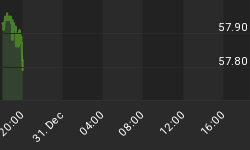It Ain't What You Don't Know That Gets You Into Trouble. It's What You Know for Sure That Just Ain't So—Mark Twain At a casual glance, it seems like a foregone conclusion that the tobacco industry is ultimately doomed.
Signs of a terminal decline are everywhere you look: Here in the United States, the per capita consumption of cigarettes has been in free-fall for at least six decades with no end in sight. In May, industry navel-gazer Nielsen released yet another damning report for the sector, showing that cigarette sales fell 6.9 percent while shipped volumes slumped 11.2 percent marking the sharpest decline in four years.
The CDC says only 14.0 percent (34.3 million) of U.S. adults are smokers compared to nearly 21 percent in 2005.
Meanwhile, the law has not exactly been making it any easier for the beleaguered industry. An avalanche of legal settlements has taken a heavy toll on smaller players. Excise duties have steadily been increasing at both the state and federal level while legal restrictions on advertising, sales and consumption have been unrelenting. In September, the tobacco industry celebrated when the FDA put the clamps on its biggest rival--e-cigarettes—for failing to curb widespread teenage use.
The schadenfreude was a bit premature.
Dozens of federal governments have been moving to increase the age for buying nicotine and tobacco products, further shrinking an already endangered market.
Last month, Virginia lawmakers voted to increase the minimum age for purchasing tobacco and nicotine products from 18 to 21 years.
Just days ago, Illinois followed suit, becoming the 17th ‘tobacco 21’ state. In essence, most undergrads in these states are barred from smoking-- or even vaping in states like Illinois.
As you might expect, smaller tobacco companies have been weeded out mainly through a wave of consolidations—just a single American manufacturer, Altria Group Inc. (NYSE:MO) remains from the original pack of seven.
Profit machines
Yet, behind the never-ending specter of doom and gloom, the industry has somehow managed to survive and even thrive—thanks to wily manufacturers mastering the art of squeezing blood from stone.
Related: China's Economic Growth Exceeds Analyst Expectations
Cigarette makers everywhere have successfully been more than making up for falling volumes with higher prices leading to swelling profits. While the number of cigarettes smoked in the U.S. has fallen more than 40 percent since the turn of the century, the cost of an average pack has increased nearly 72 percent to $6.42. Altria has already increased prices twice this year and looks set to exceed its twice-per-year cadence. Meanwhile, profits have ballooned more than 80 percent over the timeframe. Industry experts now figure the country’s tobacco industry generates more profits than any other market in the world outside China’s state-run monopoly.
Far from being dying cash cows, tobacco companies actually boast cash yields that would put to shame some high-flying tech companies.’ Free Cash Flow yield (FCF yield) is a popular metric used to measure the amount of cash left over after a company pays off its operating as well as capital expenditures. In essence, it represents what’s left over for investors to be distributed through dividends and buybacks.
Here’s how tobacco companies’ FCF yield compares with the tech industry:

(Click to enlarge)
Tobacco companies mainly use their copious amounts of cash to reward investors with fat dividends—so much so that the dividend yield for tobacco stocks is about 3x greater than the S&P 500 average.
For instance, BAT stock has climbed 16.1 percent in the year-to-date; throw in the generous 7.7 percent dividend yield and you are left sitting on a respectable 16.7 percent year-to-date total shareholder return even after factoring in a -7.1 percent buyback yield (a negative buyback yield means BAT has been issuing new shares instead of buying them back).
The bottomline: The tobacco industry has demonstrated an almost uncanny ability to build brand loyalty and squeeze profits from their operations. These companies tend to be highly efficient at delivering products to the markets at reasonable costs and grab premium pricing through branding efforts to counter falling sales volumes.
While some investors avoid ‘sin stocks’ at all costs, income investors with no such ethical qualms will continue being attracted to their high profits and juicy dividends.
By Alex Kimani for SafeHaven.com

















